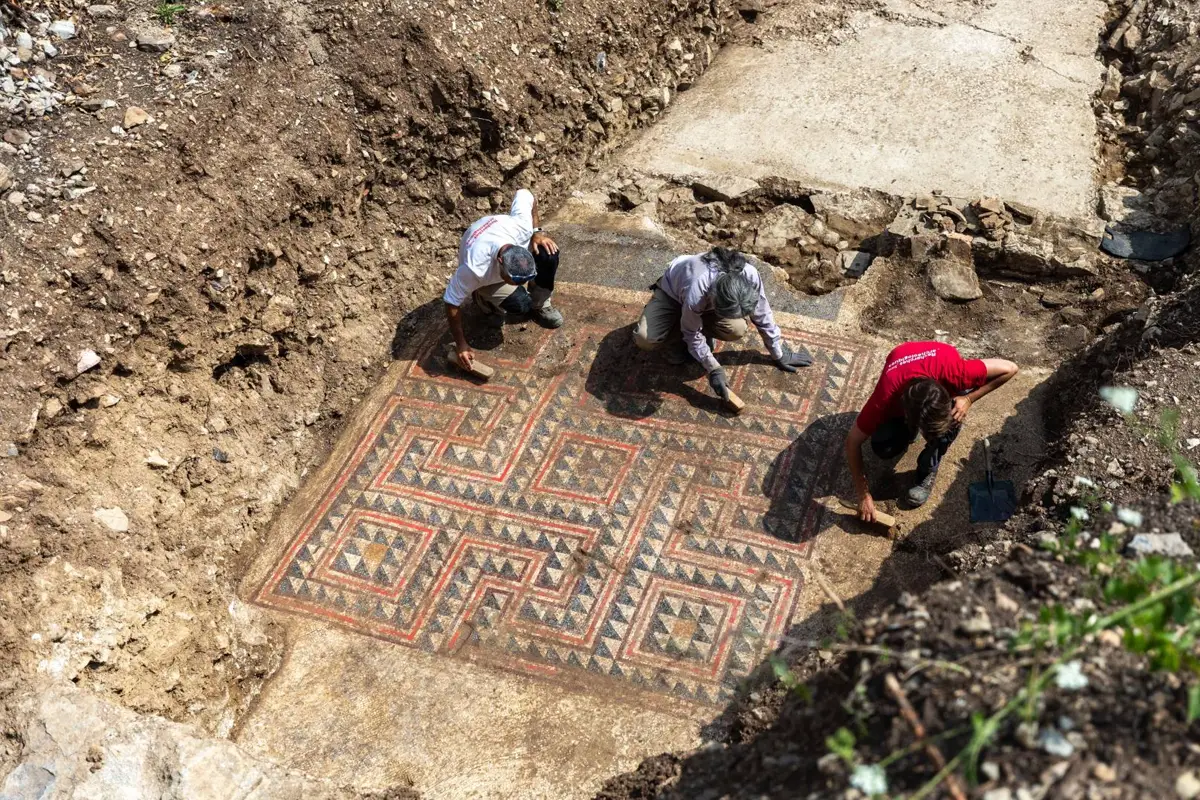The massive chariot wheel rims are clearly visible. Photo: Durham University Archaeology Department.
An archaeological team has conducted one of the most significant excavations in recent years in the United Kingdom, unearthing a collection of Iron Age artifacts of immeasurable historical value.
Findings of the Iron Age Elite
Dubbed the "Melsonby Hoard," the find was discovered near the village of the same name in North Yorkshire and comprises over 800 pieces, nearly 2,000 years old.
Among the discovered items are vehicle components, including 28 iron rims that may have been parts of chariots or wagons.
Also identified are objects of great symbolic and ritual significance, including a cauldron, a vessel—possibly for mixing wine—ornate horse harnesses, and ceremonial spears.
Some of these pieces feature exquisite decorations with Mediterranean red coral and glasswork, highlighting the craftsmanship and prestige of their owners.
One of the most fascinating aspects of the discovery is the condition of the artifacts: many were intentionally burned or broken. This suggests a ritualistic process of symbolic destruction, perhaps related to the display of wealth and power by their holders.
Despite the absence of human remains in the area, it is possible that these artifacts were part of a ceremonial pyre before burial.
A piece of the treasure entirely separated. Photo: Durham University Archaeology Department.
Unprecedented Discovery for England
Professor Tom Moore, specializing in British and European Iron Age studies, noted that the extent of the destruction of the most prestigious items in the hoard is unprecedented in Iron Age Britain.
This indicates that the elites of northern Britain wielded power comparable to their southern counterparts.
The Melsonby Hoard stands out not only for the number of its items but also for the quality and uniqueness of its pieces.
Its significance may lead to a radical reassessment of how wealth and social status were expressed during the Iron Age.
Furthermore, the discovery provides crucial information about the use and construction of vehicles during that period, an aspect difficult to study due to the scarcity of preserved findings.
During the excavation, researchers meticulously documented each artifact using advanced techniques, such as computed tomography, to analyze the fragments without causing further damage.
A notable example is a large cauldron found with a worn bottom, which, as scans revealed, features a rare fish design in the La Tène decorative style, characteristic of Celtic Iron Age art.
The Accidental Discovery of the Treasure
The treasure was discovered in December 2021 by Peter Heads, a passionate metal detectorist, who promptly reported his find to the authorities.
The official excavation took place in 2022, conducted by a team from Durham University in collaboration with experts from the British Museum, and with financial support from Historic England, which provided 143,876 euros for research and conservation.
Currently, the artifacts are housed at Durham University, where they have been stabilized and documented, while the legal process of classifying them as "treasure" is being completed.
The Yorkshire Museum has announced a fundraising campaign to ensure the Melsonby Hoard remains in the United Kingdom, where it will be exhibited to the public, allowing both citizens and researchers access to this invaluable legacy from the past.








